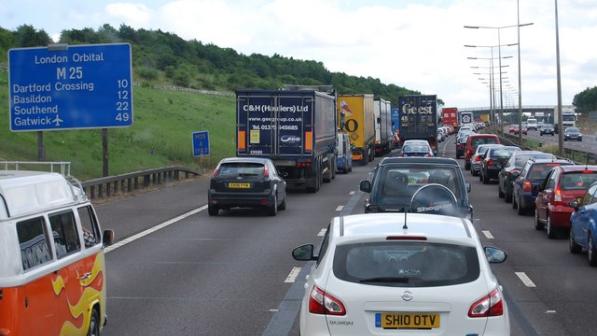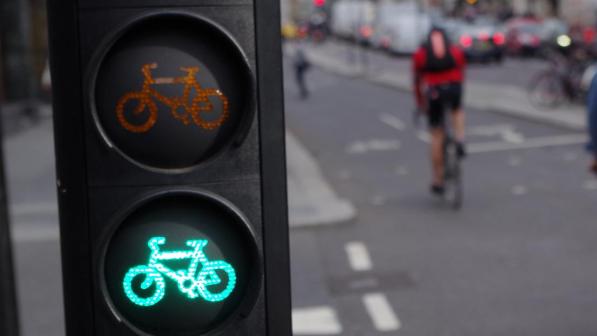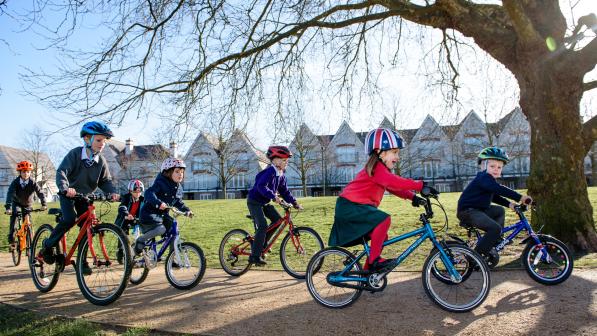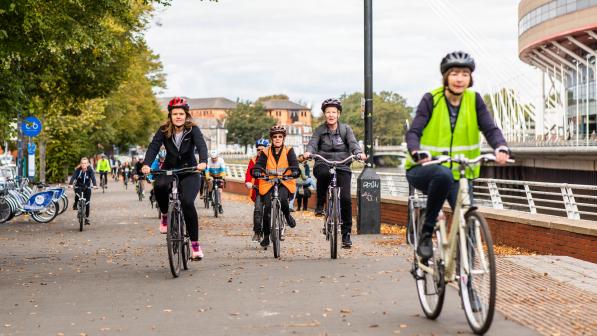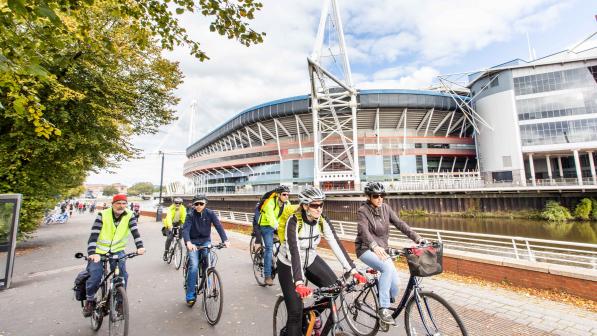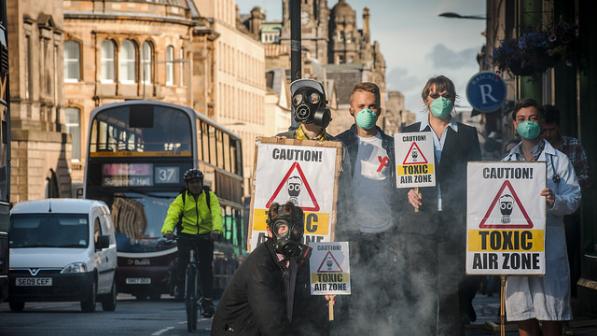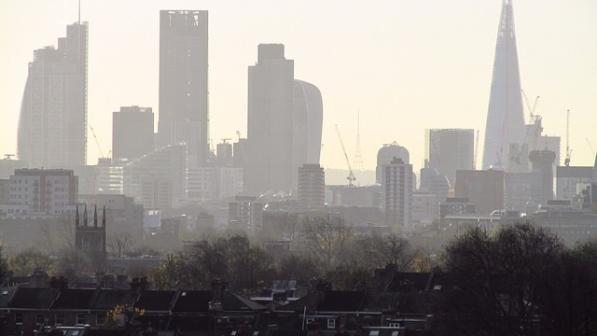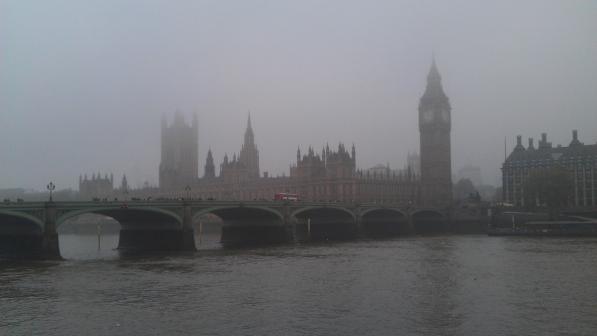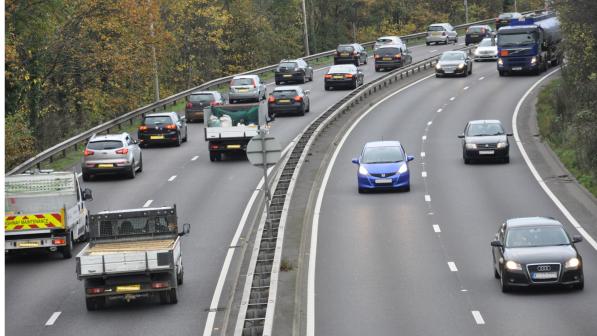Fuming: air pollution and cycling

The traffic light turns green. As I push against the pedals, the engine of the Audi in front of me roars. The car pulls off, spewing a thick black cloud of soot from its exhaust pipe. I hold my breath. A stream of expletives runs through my mind. "Another selfish **** who can’t be bothered to buy a new particulate matter filter and got it removed instead," I think.
I cycle in London every day, riding 50 minutes to and from work, so am no stranger to pollution. I started cycling for the exercise but the omnipresent carcinogenic cloud of diesel exhaust worries me. It’s been in the papers a lot lately. Car manufacturers have been fined for cheating on emissions standards. In January this year, air pollution was briefly worse in London than Beijing. In February, the European Commission issued the UK with a final warning for ‘persistent breaches’ of air pollutants…
So I jumped at the chance when a colleague forwarded an invitation to become a volunteer in a King’s College study aiming to assess commuters’ exposure to air pollution.
Something in the air
While I am preventing myself from inhaling, waiting for the soot cloud created by the Audi to dissipate, a thin black tube that sticks from behind the collar of my jacket keeps sucking in the air. The tube leads to a black box as thick as five smartphones that sits in my breast pocket. On my wrist I am wearing a bulky GPS watch that will enable the researchers to tie my exposure to air pollution to the exact location.
"The detectors are measuring black carbon – a component of PM2.5 fine particles, which generally comes from diesel exhaust," explains Andrew Grieve, Senior Air Quality Analyst at King’s College London, who led the study commissioned by Northbank BIC. "It’s mostly related to exposure to traffic but we also find it on the Underground as it can come from brake wear."
I am the only cyclist in a group of eight volunteers. Another person rides a motorbike. The rest use a combination of various means of public transport and walking. The plan is that, during the first week, we will all use our regular routes. Then Grieve will examine the data and propose alternative journeys that might reduce our exposure to air pollution.
Cyclists breathe better air than people in buses and cars taking the same route.
Andrew Grieve, Senior Air Quality Analyst, King's College London
Pollution’s health hazards
Air pollution is not only making newspaper headlines; it’s also filling up the pages of scientific journals, and the warnings are no longer just about allergies and asthma. Exposure to PM2.5 has been found to be responsible for up the 18% of pre-term births globally, according to a study by the Stockholm Environment Institute. Every extra 10 micrograms of PM2.5 per cubic metre of air seems to increase the risk of dying of any type of cancer in elderly people by 22%, researchers from the University of Birmingham found. According to a Canadian epidemiological study published earlier this year in the Lancet, people living within 50 metres from a major roadway are up to 14 per cent likelier to develop dementia. A team from the University of Washington found that people living in areas with higher air pollution are likelier to suffer from poor sleep.
In London, 9,500 people die every year due to health complications related to exposure to air pollution, another King’s College study estimated. The notoriously bad air in the UK’s capital prompted the European Commission to issue a legal warning shortly after one of the city’s streets breached limits for nitrogen oxides only five days into 2017.
Experts agree that London, like other European cities, is on average much better off than some Asian metropolises. However, this winter, during a spell of particularly cold and still weather, London’s concentration of particulate matter was worse than that of Beijing, which is known for its bad air.
Carbon in the lungs
Cyclists might seem like a particularly vulnerable group. Stuck behind buses and lorries and filtering through traffic jams, we appear to be getting more than the normal share of fumes. In 2012, Professor Jonathan Grigg and his colleagues from Queen Mary University of London analysed the amount of soot in the lungs of London cyclists and compared it to that found in the airways of commuters relying on public transport.
"We got them to cough up airway cells, the macrophages, from the lower airway, and we measured the amount of black carbon," explained Grigg, one of the UK’s leading experts on the effects of air pollution on human health. "We found that cyclists had about twice the level of soot in their airway cells of non-cyclists."
Black carbon in the lungs is essentially a marker of longer-term exposure to air pollution, says Grigg, one of the founders of the campaign Doctors Against Diesel, which represents health professionals calling for the abolition of polluting diesel cars for the benefit of public health.
Participants in the study wore black carbon monitors to enable the researchers to understand where the air pollution was coming from. The measurements indicated that the higher accumulation of carbon in the lungs of the cyclists was due to the longer time they were spending in traffic.
"In fit and healthy individuals, it is not going to make too much of a difference," Grigg says. "But it suggests that our roads need to be cleaner so that people who choose to travel to work actively are protected more."
Bike versus tube
I await the results of the first week of my experiment with apprehension. On my 50-minute commute to work, I have to pass through some serious air pollution hotspots, and I am getting concerned about the colour of my lungs.
I meet Grieve at King’s. We sit by a computer in a lab. He scrolls through pages of graphs – the readings from my black carbon detector. "From what I see, your commute constitutes almost all of your exposure on a normal day," he says. "In your home and in your office, there are barely any black carbon particles; the concentration is very low – less than two micrograms per cubic metre of air."
From the flat line of my indoor exposure protrude, at regular intervals, multiple peaks – my morning and evening commute. "This is 17 micrograms, here you have 22. This one is actually quite big – 36 micrograms of black carbon PM2.5 per cubic metre of air," says Grieve. He pauses at two surprisingly high peaks.
"Do you remember what you did on Saturday afternoon?" he asks.
"I went to see a friend in south London but I took the Tube." I recall.
"That makes sense." Grieve seems unfazed. "There is much more black carbon on the Tube, especially on the deep lines. There is not much ventilation so it’s actually quite dusty." On the Tube, my peak exposure is 80 micrograms per cubic metre – more than twice as high as the highest exposure during my cycling commute.
Is it better to cycle?
The question of exposure to air pollution in relation to the mode of transport is quite complex. According to Grieve, it is complicated to draw a comparison between a random cyclist and a random public transport user. Earlier studies have shown that deep Tube lines are worse than the open ones. The researchers also know that cyclists breathe better air than people in buses and cars, even if they are travelling on the exactly same route at exactly the same time.
"People who are in a vehicle are travelling in a tunnel of pollution of all of the vehicles that are in front of them," says Grieve. "Some cars may have air filtration systems but certainly not all of them. The air pollution comes into the front grill and builds up in the closed space. If you are walking or cycling, you are in a much bigger volume of air so the air pollution becomes more diluted, more quickly."
On the other hand, the cyclists’ ventilation rate is higher than that of a sedentary bus passenger. As a result, the cyclists inhale more air and with it more air pollution.
When it comes to the overall health risks or benefits, one also needs to keep in mind that cycling, as a physical activity, by itself provides benefits, Grieve believes.
Cycling in any European city is always better for health than not cycling.
Marko Tainio, Senior Research Associate at the Centre for Diet and Activity Research of the University of Cambridge
Marko Tainio, Senior Research Associate at the Centre for Diet and Activity Research of the University of Cambridge, agrees. In a study published in April 2016, Tainio and his colleagues concluded that in spite of the air pollution, cycling in any European city is always better for health than not cycling.
"We conducted a computer modelling study, in which we combined information from epidemiological studies about the health benefits of physical activity with the risks of breathing polluted air." said Tainio.
Decades’ worth of data from cities all around the world was fed into the computer programmes. Tainio says that the analysis showed that in any European city, people can cycle for as long as they wish and the benefits of the physical activity would always outweigh the risks of air pollution. The situation is quite different in Asia.
"In Delhi, for example, the average concentration of fine particulate matter is about 150 micrograms per cubic metre of air. That’s ten times more than in London," Tainio explains. "But even in Delhi, you can cycle 45 minutes and you are still getting the benefits. After 45 minutes, the risks related to exposure to air pollution start outweighing the benefits of exercise."
Choose your route
So how can you maximise the benefits and minimise the risks? Buying a face mask is one option but Grieve suggests that there are other, less obtrusive ways. For the second week of my experiment, the researcher devises a different route for me. It’s almost ten minutes longer but avoids most major roads and intersections.
When I arrive for my results, Grieve seems content with what he has found. "Your morning commutes in week two were on average 36% lower than your morning commutes on week one, and your evening commutes on week two were about 25% lower than your evening commutes on week one," Grieve says. "If you stick to this route in the long term, over time that could have significant benefits for your health."
